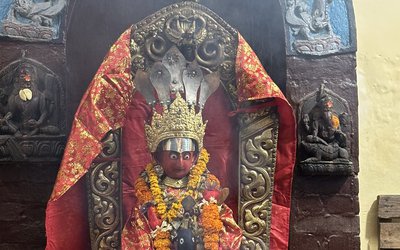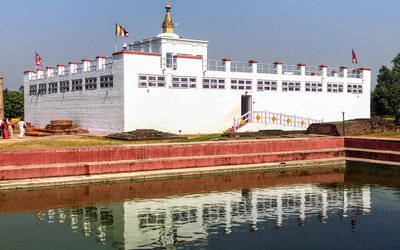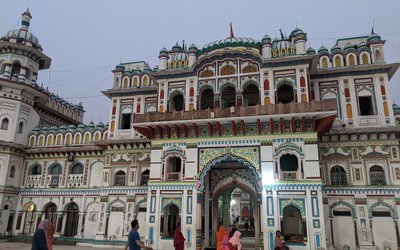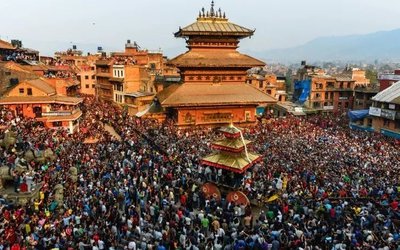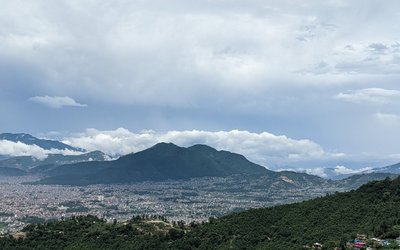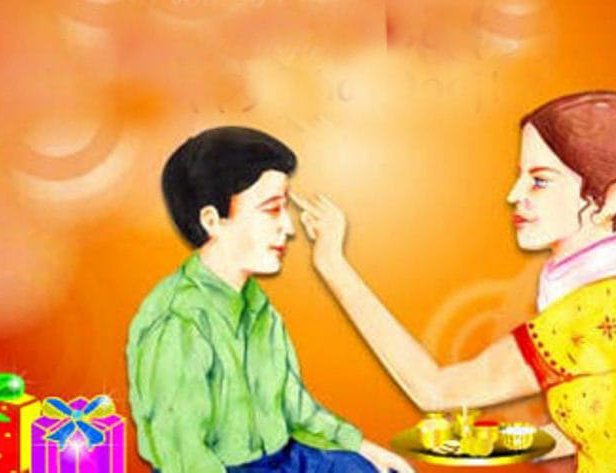
The Nepal Calendar Determination Committee (NCDC) has announced 11.37 am on Thursday, October 27 as the auspicious time for putting and receiving Bhai Tika this year.
Why To Celebrate Bhai Tika (Bhai Dooj) on Tihar Or Diwali
What is Bhai Tika? When is Bhai Tika? How Bhaihai Tika in Nepal? Why is Bhai Tika celebrated? What are the causes to celebrate Bhai Tika? What are the reasons to celebrate Bhai Tika in Hinduism? Do you know about the date of Bhai Tika? This is an article about all these questions. It gives you to Solution. Happy Bhai Tika. why do we celebrate Tihar? How do you celebrate Tihar?
Bhai Tika and Laxmi Puja is the main reason to celebrate the Tihar festival. There are many reasons to celebrate Tihar. But here we are giving you some reasons to celebrate Bhai Tika. As we all know that Bhai tika is the main day of the festival of brothers and sisters. We are celebrating Bhai tika (the main day of the festival) for all brothers and sisters or didi Bahini and Daju Bhai.
What is Bhai Tika?
Bhai Tika is one of the most important days of the second biggest festival in Nepal. The festival of lights, Tihar, which is celebrated for 5 days has 5 different special occasions celebrated respectively on each day. Bhai Tika which is celebrated on the 5th and last day of Tihar is an important day of the festival. So what exactly is Bhai tika? Let us start with a little knowledge about the main festival, i.e Tihar
Tihar also known as Deepawali is one of the important festivals of Nepal. The festival which is also known as the festival of lights is a Hindu festival. The festival is known as swonti in their native language among the newars of Kathmandu while it is popularly known as Dipawali among Madhesis.
Tihar comes after the biggest festival in Nepal, Dashain a week apart. People light their houses with ‘Diyos’ and many other lighting bulbs inside and outside their houses. We can see the whole of Nepal lighting better than ever in a whole year during this festival. This bright and beautiful festival that lasts for 5 days starts with Kaag puja on the first day.
The 2nd, 3rd, and 4th days are celebrated as Kukur Tihar, Gai Tihar and Laxmi puja, and Govardhan puja respectively. Finally, the 5th day is the day of Bhai Tika which is the most important and special day of the festival. This is a little information about Tihar. Now, let’s go back to our topic.
Bhai Tika Tradition
Bhai Tika, the last day of the festival yet special among all. Tihar is popularly known for Bhai Tika. That does not mean other days of the festival are not important, they are equally important as well but Bhai Tika is special. Generally, Bhai Tika is a tradition where a sister worships their brothers and gets a gift from their brothers in return. Sisters apply tika to the forehead of their brothers to thank them for all their love and support and to protect them from the bad.
The story behind the tradition says that one-day Yamraj, the god of death visited her sister, the Yamuna where her sister applied tika on the forehead of her brother, Yamraj and they enjoyed eating food and sweets, talking, and sharing their moments. Yamraj also gave a gift to her sister in return. That was the day when the announcement was made by Yamraj that any brother who receives tika from her sister on that day will never die.
For this belief, everyone celebrates Bhai tika on this day. They apply tika on the foreheads of their brother and complete the ritual with other necessary activities and wishes for the long life of their brother. Sisters thank their brothers by applying tika and offering garlands with sweets and fruits as brothers always protect their sisters. The stories can vary. But besides the belief, the tradition of Bhai Tika is special because it creates a warm bonding between brothers and sisters.
Sisters and brothers celebrate this in the most special way. Brothers sit on the floor where the sisters apply the tika to their brothers. The tika is of 7 different colors which are also known as Saptarangi tika. Along with the tika, the brothers are also offered garlands of flowers like marigolds, etc, not only that, sisters also offer sweets and fruits, and chocolates and worship them in a traditional way.
Then after, sisters get gifts in return from their brothers; some get money, and some get gifts. The newars from Kathmandu celebrate in the same way except for that they make mandalas and celebrate in the most traditional way. Some of those who do not have any brothers or sisters, practice this tradition with their cousins.
It is also believed that the God of death, Yamaraj comes for the life of the brothers so the sisters perform this ritual for the long life of their brother which saves the brother’s life. While some who do not have brothers go to the temple at Ranipokhari. The 5th day is one of the most auspicious days among the 5 days of the festival.
Tihar is the festival of lights. Tihar festival is a five-day-long celebrations festival in the Hindu pantheon. The first day Tihar is Kag Tihar. Kag Tihar is named also as Kaag Tihar / Kag Tihar / Kaag Puja / Kag Puja / Kaag Pooja / Kag Pooja. Kag Tihar means worship of crow.
But the main day of Tihar is Laxmi Puja, the worship of the Hindu Wealth Goddess Maa Laxmi. The fifth or the last day of Tihar is Bhai Tika. Bhai Tika is also named as Bhai Teeka, Vai Tika, Vai Teeka, Tihar Bhai Tika. The reason why this festival is known as Bhai Tika is that it falls on the second day after the new moon, which is Tika day.
Bhai Tika is such a day to pray for the long life of brothers by sisters, which is referred to as “vai or Bhai”. According to Hindu religious scriptures, Yamaraj, the God of death, went to visit his sister’s house after a long period of separation.
His sister, Yami was very happy to see him and welcomed him by putting an auspicious mark on his forehead for his welfare. Yami and Yamraj then shared a meal. He was so pleased with his sister’s reception, he proclaimed that every year, on the Tika day, if a sister puts a Tika (Tilak) on her brother’s forehead, then no one can harm her brother.
To date, this tradition is followed. Sisters perform puja for their brother’s safety and well-being. Brothers in return give gifts to their sisters as a token of love. Varied gifts specially meant for Bhai Tika are available in the market. This festival of Tihar is incomplete without Bhai Tika. It is referred to as “Bharatiya” in the Madhesh region of Nepal and “Bhai-Dooj” in India.
bhai dooj-bhai tika-bhi teeka, importance, history, brother sisters love relation tihar diwali, dipavali festival picture
Celebration Bhai Dooj
The reason to celebrate Bhai Tika in Hindu PantheonThe reason to celebrate Bhai Tika in Hindu Pantheon
14 Reasons Why to Celebrate Bhai Tika, Bhai Teeka, Vai Tika, Tihar Tika
Bhai Tika (Bhai Dooj called in India), the festival of celebrating brother and sister love, falls on the last day of the Tihar. Bhai tika is a day in which sisters worship their brothers and receive gifts from brothers in return. On this day sisters apply tika on the forehead of their brothers to protect them from evilness. There are several mythological reasons as well as other reasons to celebrate Bhai tika (Bhai Dooj). Some of them are listed. Some of them are listed below:
1) From the word only, it is known that it is the day of brother and sister love. This day brother is worshipped by their sisters for their protection, love, and care. This day is celebrated to strengthen the relationship between brother and sister,
2) The mythological reason behind celebrating this festival has its own importance. The god of death, Yamaraj visited his sister’s Yamuna house after a long time. There he received a warm welcome from the Yamuna. She applied a tika on his forehead and fed him a delicious meal. Being happy, Yamaraj proclaimed that if sisters worship her brother on this particular day, no evil can harm the brother. Since then Bhai tika (Bhai Dooj) is celebrated.
3) Brother always protects his sister from every evil and bad situation. On the day of Bhai tika (Bhai Dooj), the sister worships her brother for his protection and care.
4) The reason for the celebration also links to the period of Lord Krishna. After killing a demon named Narakasur, he went to his sister Subhadra where he received a warm reception with tika and Diya. Day, every year brother is worshipped by his sister on this particular day.
5) It is also said that Lord Mahavir when attended nirvana, his brother was very sad and in this situation, his sister comforted him. With the essence of this, every year Bhai tika (Bhai Dooj) is celebrated.
6) Bhaitika is the festival of celebration of the strong bond between brother and sister. Sisters worship their brother and wish for the long life and prosperity of the brother.
7) Putting the garlands of Makhamali and Dubo on brothers during Tihar means ensuring their prosperity and long life. These garlands also represent the bonding between sisters and brothers.
8) This day symbolizes the prayer made by sisters for the long life and prosperity of their brothers as they are the one who protects them always.
9) This day is celebrated when sisters put garlands of Makhamali which never fades and pray that their brother’s life is always filled with happiness and never fades.
10) Brother and sister share an unbreakable bond. The bond gets much stronger and the brother’s life is always filled with happiness and prosperity, sister worships their brother and this is the reason to celebrate Bhai Tika (Bhai Dooj).
- According to Hindu religious scriptures, Yamaraj, the God of death, went to visit his sister’s house after a long period of separation. His sister, Yami was very happy to see him and welcomed him by putting an auspicious mark on his forehead for his welfare. Yami and Yamraj then shared a meal. He was so pleased with his sister’s reception, he proclaimed that every year, on the Tika day, if a sister puts a Tika (Tilak) on her brother’s forehead, then no one can harm her brother. To date, this tradition is followed. Sisters perform puja for their brother’s safety and well-being. Brothers in return give gifts to their sisters as a token of love.
- According to Hindu religious scriptures, another version of Lord Krishna, after killing Narakasur, the demon king, went to meet his sister Subhadra. Subhadra welcomed him in the traditional way by showing him a light and putting on his forehead a Tika (tilak) of her sisterly protection.
- Some other Hindu religious scriptures and legend says that Bhagawan Mahavir found nirvana, and his brother Raja Nandivardhan was very sad and missed his brother a lot. Sister Sudarshana then comforted his brother. Since then, women have been revered during this festival.
- The essence of the Bhai Tika festival is that it is celebrated to strengthen the love between brothers and sisters. It is a day of food-sharing, gift-giving and reaching out to the innermost depths of the hearts. Brothers and sisters indulge themselves on this day by gifting each other gifts.
What are the items needed for Bhai tika?
Some of the different items used in Bhai tika for the ritual are Saptarangi tika, garlands, and the equipment for making mandalas, etc. Besides, many fruits with sweets and chocolates are needed as part of the ritual. Also, yogurt is also needed as it is provided as ‘Sagun’ which is also one of the important parts of the ritual.
To conclude, we can say that Bhai Tika is one of the rituals or traditions of Tihar that lies on the 5th day. It is a tradition where sisters apply tika on the forehead of their brother and they also offer garlands made with marigolds along with fruits and sweets. The sisters get a gift or money from their brothers in return. It is believed that the sisters who worship their brothers on this day will be blessed by Yamraj and continues to have a long life.
This is one of the beliefs for which people perform this tradition but what is more important in this special tradition is it creates a beautiful and warm bonding between brothers and sisters. It strengthens their relationship which is the best and most beautiful part of this special tradition. That is why Bhai Tika is special. Thatis the reason Bhai Tika is considered to be the most important day of the festival.
Besides, Tihar is a festival of lights when everyone is in the mood for celebration. This is the only time in a year when we get to witness the traditional Bhailo’ song and dance, the firecrackers lighting the sky more beautiful than ever, the time when we worship crows and dogs( Nepal is probably the only country that worships dog once a year which is during the 2nd day of Tihar) and the time when Nepal shines brighter than ever in a whole year. Tihar definitely is a festival that we should not miss. We are really blessed to have a festival like this.
How is Bhai Tika (Bhai Dooj) celebrated
During the marvelous fall months, Kathmandu is alive with the pageantry of festivities, together with the pageant of Lights, Deepawali (Tihar). This lovely pageant is widely known for 5 days whereas individuals offer expression to their happiness by lighting Diyas (small clay oil lamps), enhance their homes and entrances with labyrinthine, colorful styles of rice, paint and chalk, and drown themselves within the richness of the occasion.
The pageant culminates in Bhai Tika, on a daily basis that rests on the premises of affection, rituals, lovely hues, reverence and puja done particularly for one’s brother. This occasion honors brother-sister relationships, celebrating the holy emotional bond that they share. It’s marked by giving special prayers for every brother’s prosperity and long life.
Legend holds that once the Kirati King Bali suspend fell mortally sick, his sister Jamuna sorted him and guarded him. Once Yamaraj, the God of Death, came for Bali Hang’s soul, Jamuna pleaded to attend till she finished worshiping her brother; that’s, till Panchami (Bhai Tika).
She then conducted an extended and elaborate ceremony for her brother and performed a similar one for Yamaraj. She additionally places forth some conditions: that Yamaraj shouldn’t take Bali suspend till the tika, that she had smirched on his forehead, fades away; till the water besprent on her brother dries; and till the Makhmali flowers wilt.
Over the years Yamaraj sent his messengers to examine the flowers, and once ensure Bhai Tika puja arrived Yamaraj admitted that he had lost Bali Hang’s soul to his pious sister and granted him long life. The fashionable day Jamunas bear in mind the legend and perform the rituals with abundant enthusiasm, love, and gaiety. They believe that the desired rituals can shield their brothers from death and that they’re going to get pleasure from an extended life, health, and prosperity.
Sisters when putting tika on their brother’s forehead they prey for long and prosperous life whereas brothers, on the other hand, make a promise to keep their sisters safe form every problem that they may face in the coming days. This is how the bond between brothers and sisters becomes strong on this day.
To begin the ceremony, the sister attracts 3 mandaps or boundaries at a chosen place. The mandaps square measure created for Lord Ganapati, Janmaraj (the God of Birth), and Yamaraj. The sister then performs the puja of the deities when the brother is requested to take a seat on the mat for the tika ceremony. Special offerings square measure placed before of him.
Whereas intoning a protecting spell, the sister pours a circle of oil and water from a copper pitcher around his body as a boundary over that death and evil spirits cannot pass. Then, kneel before him; she worships him with the offerings of flowers, nuts, fruits, and rice amidst flaming wicks and incense. She then breaks walnuts before applying the particular tika.
The foremost vital act is applying the special Bhai tika—called Saat Rangi tika (seven-colored tika), consisting of the colors of the rainbow. This is often applied on the prime of a white base on the brother’s forehead. Making the tika begins with inserting a banana leaf (cut into a line shape) on the brother’s forehead. It’s controlled by the sister, and then she applies the tika base (made from rice paste).
The seven colors square measure dabbed on the prime of the bottom together with her fingers. (Some might use a tiny glow stick or a brush in situ of the banana leaf. In this case; the stick is swaybacked into the tika base and brushed vertically on the forehead. The seven colors square measure applied on the prime of the bottom employing a completely different stick.) Then, a flower garland is placed around the brother’s neck because the sister prays for his long life, happiness, and continuing prosperity.
Bhai Tika is the fifth and also the final day of the favored pageant of sunshine referred to as ‘Tihar’ or ‘Panchak Yama’ in Nepal. As Bhai Tika may be a part of Tihar celebrations it’s additionally called ‘Bhai Tihar’. Bhai Tika is an especially vital pageant for brothers and sisters everywhere in Nepal and they celebrate the occasion with a ton of enthusiasm and gaiety.
At the moment, sisters apply tilak on the forehead of their brothers and pray to the Lord Hindu deity, the God of death, for or their brother’s long and prosperous life. The exchange of gifts besides a ton of merriment marks the gorgeous pageant of Bhai Teeka.
Ceremonies of Bhai Tika
Festival of Bhai Tika holds a great deal of importance for the individuals of Nepal and that they celebrate the pageant following all the set rituals and tradition. There’s a well-liked legend behind the origination of Bhai Tika in Nepal.
It says that way back a sister saved the life of his brother from the clutches of Yamaraj (the God of death) by playing Bhai Tika. Since that point sisters are applying tikka on their brother’s foreheads, in a very belief that this can shield their brothers from death and that they will get pleasure from an extended life. Sisters additionally prey on or their brother’s health and prosperity at the moment.
Bhai Teeka
In many societies, sisters invite brothers to their house on the occasion of Bhai Tika. To start the ceremony, the sister attracts 3 mandaps or boundaries at a chosen place. The mandaps square measure one every for Lord Ganapati, Janmaraj (the God of birth), and Yamaraj. The sister then performs Puja of the deities. After this, brother is given seating on a mat for the tika ceremony. Sisters apply a special Paanch Rangi Tika consisting of 5 colors (red, green, blue, yellow and white) on the forehead of their brother.
Following the custom, the sister worships her brother’s long life and attracts a boundary (mandap) around her brothers with oil victimization devil grass. This attention-grabbing tradition is symbolic of the idea that nobody together with the Hindu deity will cross this line of protection guarded by a charmed sister. Brothers additionally bless their sisters with a cheerful life.
Sisters when putting tika on their brother’s forehead they prey for long and prosperous life whereas brothers, on the other hand, make a promise to keep their sisters safe from every problem that they may face in the coming days. This is how the bond between brothers and sisters becomes strong on this day.
Celebrations of Bhai Tika / Bhaiya dooj
People of Nepal celebrate Bhai Tikka with a ton of fun and frolic. An auspicious time for holding Bhai Tikka ceremonies in Nepal is asserted by the royal prognosticator through the public broadcasting system on the eve of the pageant. On the day of Bhai Teeka, even as the former King of Nepal receives tika from his sisters. In the past, after Tika by King, a thirty-one-gun salute was given by Nepal Army.
When finishing the ceremony sisters treat their brothers with luxurious meals and ton of gifts, together with a ‘Shagun’ of fruits and sweets. Brothers in their flip delight their sisters with gifts and money. There’s ton of merriment on the occasion because it is time for a family reunion. Relatives are invited to celebrate the legal holiday. Individuals sing and dance and the mood of the individuals is usually upbeat.
Folks that don’t have a brother of a sister, visit Yamaleswor temple set within the middle of range Pokhari on the occasion of Bhai Tikka to pay deference to Lord Shiva. Ranee Pokhari may be a historical lake engineered by Pratap Malla. It’s set in between Ratna Park and Jamal. Sisters prepare many food items to feed their brothers and brothers buy beautiful gifts for their sisters.
At night, every family and store can light styles of colorful lights, and therefore the sky is stuffed with spectacular fireworks. Throughout this competition, friends and relatives can get reunion and exchange Tihar gifts and greetings with one another. The climax of Tihar in an Asian country is bathing in the holy stream to purify the body and mind. Additionally, to wish to the gods for the health of the complete family, Nepalis conjointly pay special relation to Laxmi, the god of wealth and luck.
Significance of Bhai Tika
– When executing the evil demon Narakaasur, Lord Krishna visited his sister Subhadra World Health Organization and gave him a heat welcome with sweets and flowers. She additionally dearly applied tilak on Krishna’s forehead.
– it’s believed that the Yamuna visited her brother Hindu deity herself, the moment throughout that she applied the auspicious tika on his forehead, garlanded him and fed him special dishes. Being proud of this Hindu deity declared that anyone World Health Organization receives tilak from his sister won’t die on it an explicit day.
– Brother-Sister Bond is increased. Their bond becomes strong. They enjoy each other company. On this occasion, they share their gift and pray for each other happiness and love each othe
- Nepal Is Expected To See 60,000 People Infected with Dengue This Year
- Jul 04, 2025
- Journalist Pathak ordered to be released on bail of Rs 25,000
- Jul 04, 2025
- IPPAN To Hold Ninth Power Summit in September: IPPAN President Karki
- Jul 04, 2025
- Weather Forecast: Generally Cloudy Across The Country With Heavy Rain At One Or Two Places In Koshi, Bagmati And Lumbini Provinces
- Jul 04, 2025
- Global IME Capital’s “Samunnat Yojana 2” Mutual Fund Opens for Public Offering from July 6
- Jul 03, 2025


